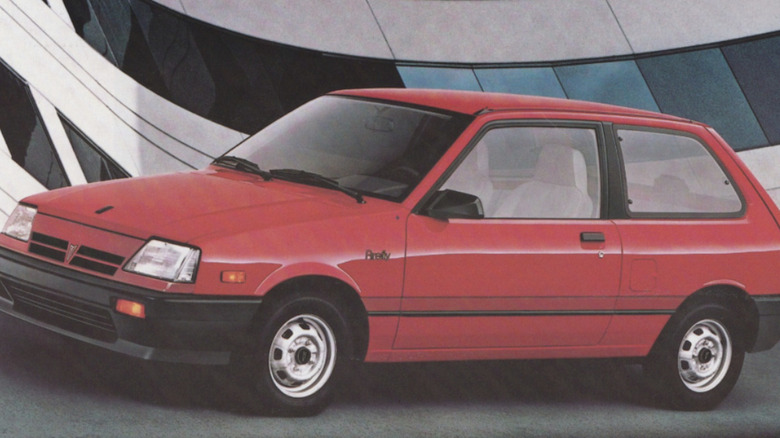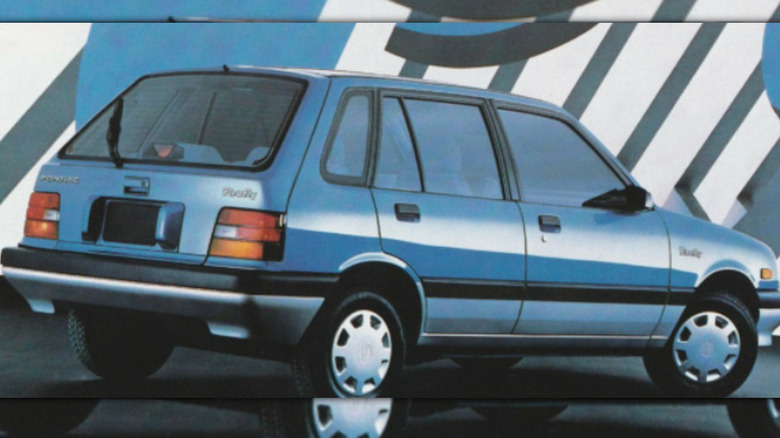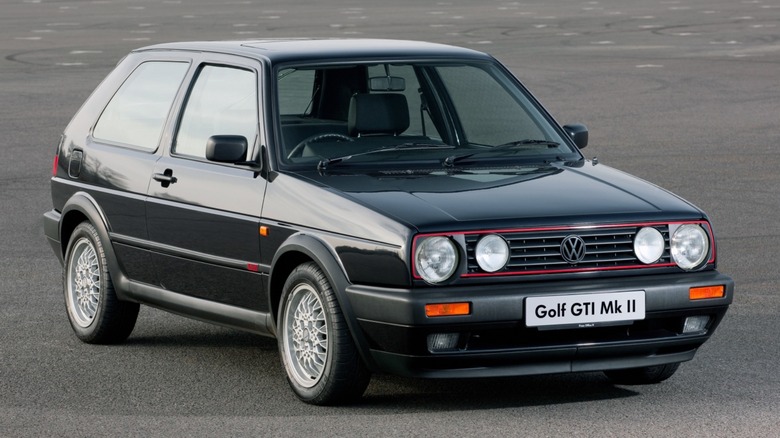Here's Why No One Remembers The Pontiac Firefly Turbo
When you think about Pontiac, what car comes to mind? Is it the legendary muscle car, the 1964 Pontiac GTO? Or how about the 1967 Pontiac Firebird, which dominated the American pony car market for over 30 years? Regardless of your answer, there's little chance that you thought of the Pontiac Firefly Turbo.
While Pontiac had a storied 83-year history as one of America's most well-known and cherished brands, it also had a few rough periods that dramatically changed the direction of the company. One of Pontiac's biggest periods of change happened in the late 1980s, which was a major turning point for the entire American automotive market. The "malaise era" caused by the 1973 oil crisis got Americans acquainted with small, economy-focused cars in place of the fire-breathing, iconic big-block V8 engines of the '60s. Then the import wave hit U.S. shores in the 1980s, proving that foreign manufacturers were much better at the cheap, family-focused, economy formula that was taking over the market. Not being able to meet the same standard, American car companies, including Pontiac, struggled to stay afloat.
In a last-ditch attempt to break into the market and sell some cars that people would actually buy, GM decided to join efforts with a foreign brand that knew a thing or two about building small economy cars: Suzuki. In 1989, Pontiac and a number of other GM brands miraculously began selling well-built, cheap, and reliable economy cars, including the Pontiac Firefly Turbo.
The Firefly Turbo went by a lot of names in various markets
The General Motors and Suzuki partnership had a pretty dramatic effect on the Canadian market, as Ontario served as the main production location for Canadian Automotive Manufacturing Inc., which is what GM and Suzuki settled on as the name for their joint venture. The CAMI manufacturing plant was opened in 1989 and quickly began manufacturing cars that were essentially just rebranded Suzukis.
One of the first vehicles produced at the Ontario CAMI plant was a tiny 144.5-inch-by-70-inch econobox known as the Suzuki Cultus. It had many names, with it being known most notably as the Suzuki Swift in other countries outside of Japan. The only difference between the Japanese model and the model produced in Canada was the branding. Instead of being marketed as either the Suzuki Cultus or the Suzuki Swift, the Canadian version was instead branded as the Pontiac Firefly Turbo.
To make things even more confusing, the Firefly Turbo received yet another name when it was imported from Canada into the United States. On this side of the border, the Firefly Turbo was branded as the Chevrolet Sprint Turbo. Once again, there were no internal or external tweaks other than a new badge. That's why you've likely never heard of the Pontiac Firefly Turbo. However, most have heard of the Geo Metro, which is similar and was introduced in the same year the Cultus/Swift/Firefly/Sprint was.
There were much better hot hatchbacks available
If the 1960s were the golden age for the muscle car, the 1980s were the golden age for the hot hatchback. The Pontiac Firefly Turbo occupied a rather strange niche in that market though, as it wasn't quite hot and wasn't quite a hatch. It was almost a lite version of both of those things, which made it a little less special than other performance hatchbacks of the era.
By all accounts, the Volkswagen Golf GTI was the benchmark for the hot hatchback in 1987. The GTI invented the modern hot-hatch category in 1976, and the Mk II, released in 1987, improved on the formula. With a 123 horsepower DOHC 16-valve four-cylinder under the hood, it beat almost any category competitor in almost every metric, all without a turbo. The U.S. was producing some heavy hitters too, with cars like the Shelby-tuned, 175-horsepower Dodge Omni GLH.
The fact of the matter is that the Pontiac Firefly Turbo couldn't play with the big boys, not even a little bit. With only 70 horsepower available from its prehistoric turbocharged SOHC three-cylinder, it struggled to 60 mph in 9.5 seconds. For reference, the 16V Golf GTI made it to 60 mph in 7.8 seconds while the Omni GLHS sprinted there in just 6.5 seconds. There's no question that the Firefly Turbo's lackluster performance is one of the main reasons why no one remembers it.


